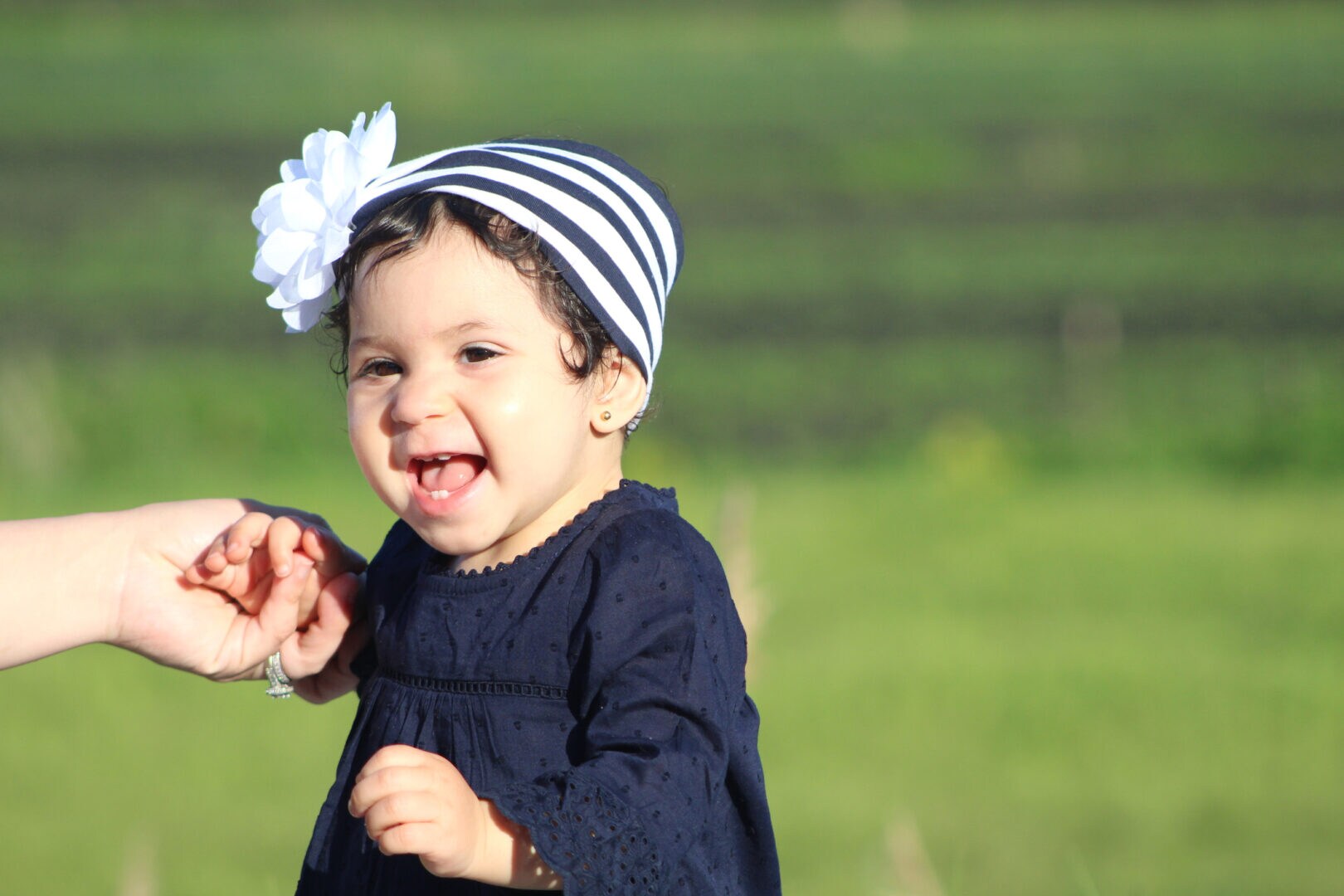As with most things baby-related — circumcision, breastfeeding, sleep training — baby ear piercing has become controversial in recent years. When Kylie Jenner pierced daughter Stormi’s ears before 5 months, she was criticized far and wide on social media. But in many cultures, baby ear piercing is a rite of passage. For instance, in some Latin countries, hospitals perform ear piercing before the baby is discharged. In India, the Hindu tradition karnavedha sanskar requires piercing a baby’s ears in either their first or third year of life.
Wondering when can babies get their ears pierced and how to best care for them after? Here’s what the experts have to say.
When babies can babies get their ears pierced?
Most experts advise waiting a few months before getting babies’ ears pierced — but even among professional opinion, there’s a range.
The ideal baby ear piercing age is anytime after a baby is 6 months old, according to Dr. Sara Siddiqui, a pediatrician and clinical assistant professor in the Department of Pediatrics at NYU Langone’s Hassenfeld Children’s Hospital in New York. “This is the age that the third dose of tetanus is given following the routine vaccination schedule, and your baby would be most protected after this time,” she notes.
Meanwhile, Dr. Stephanie DeLeon, a pediatrician and section chief of Pediatric Hospital Medicine at Oklahoma Children’s Hospital OU Health, recommends waiting until “at least the two-month visit and first set of vaccines” before piercing ears.
Even with these recommendations, the American Academy of Pediatrics (AAP) acknowledges that when “performed carefully and cared for conscientiously, there is little risk [to baby], no matter what the age of the child.” The AAP does, however, suggest waiting until the child is old enough to care for pierced ears on their own, as it will reduce the chances of infection or injury to the area.
It’s also worth noting that, in 2005, an article published in Pediatrics found a higher instance of keloids (scarring on the skin after trauma) from ear piercing higher in those who had their ears pierced after the age of 11.
And a word on discomfort: “If done correctly and quickly, there tends to be minimal pain,” Siddiqui says, adding that for babies, “some places offer to pierce both ears at the same time” in order to reduce distress.
Where to go for baby ear piercing
“Piercing shops are great for older kids, as they’re heavily regulated and typically use a hollow needle, which seems to heal easier and may hurt less,” explains DeLeon. “However, most have age limits and won’t do piercings for babies and younger children. For those, I recommend trying to find a pediatrician office where piercing is performed [not all do it]. Most will do piercings for children who aren’t their typical patients.”
Siddiqui adds that, in addition to medical ear piercings being available at some pediatrician offices, some ear, nose and throat specialists offer it, as well. “Jewelry stores are another option,” she says.
Above all, make sure you feel comfortable and safe in the place where the piercing is being done. “The best place to get a child’s ears pierced is one that’s clean,” says Ashley Schmitz, a pediatric nurse practitioner at OU Health Physicians. “When scheduling the appointment for piercing, ask what the procedure is and what they do to prevent infection. The person doing the piercing should clean the area with alcohol or soap and water and be wearing gloves.”
How to care for baby ear piercings
According to DeLeon, every location that does piercings should send parents home with instructions on how to clean and care for newly pierced ears. “Typically, this will involve two weeks of cleaning the area twice daily with an alcohol-based solution and Q-tip, gently rotating the earrings and not removing them for four to six weeks,” she says. “Parents should watch out for any signs of redness, swelling or drainage from the piercing site and see their pediatrician quickly if they occur.”
Siddiqui adds: “It is best to have a round gold post earring in order to prevent any allergic reactions.” Twenty-four karat gold earrings are the best option for baby ear piercings, as they’re 99.9% gold. Other options have less gold and use other metals, such as nickel, to make up the difference, making allergic reactions more likely.




